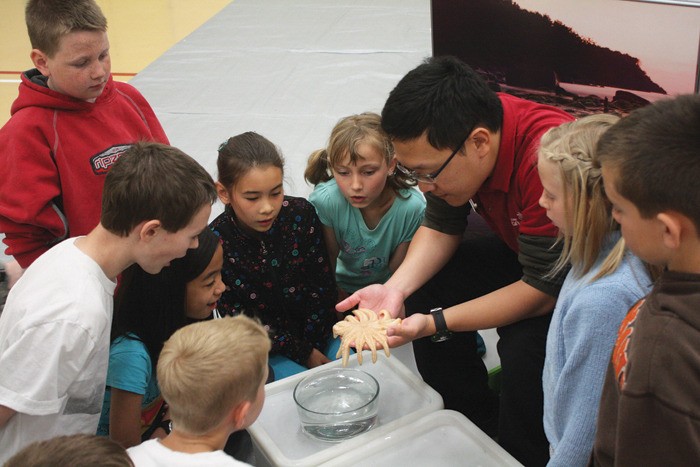From mountains to lakes and streams, the Kootenay region seems to have it all. However, there is one thing that’s missing, and that’s access to a major body of water. Many children in the region will have never even visited the ocean, and that’s why the Vancouver Aquarium AquaVan offers to bring a little touch of ocean life to the schools and events it visits.
“We get amazing feedback from this program,” Vancouver Aquarium manager of curriculum programs Jonathan Hultquist.
The AquaVan made two stops in the East Kootenay region this week, coming to Windermere Elementary on Monday (May 28) and to Edgewater Elementary on Tuesday (May 29). The van is essentially a mobile classroom, with an educational staff and a wide range of coastal invertebrates — from sea stars and sea cucumbers to crabs and sea urchins. Students from different grade levels take part in a number of different stations that teach them about ocean habitats, marine mammal conservation and more.
“[The AquaVan] gives an up-close, hands-on opportunity to meet live animals from the coast of B.C.,” Hultquist said. “Students get to learn about conservation, and the importance of stewardship and protecting the environment, particularly the marine environment.”
The AquaVan has been touring B.C. and parts of Alberta for the past 18 years, and has plans to go to the Northwest Territories this year as well.
Its current tour will take it more than 2,800 kilometres through the Kootenay Rockies, visiting ten different schools along the way. Hultquist said the AquaVan also tries to make a lasting impression on the schools and students it visits, by encouraging them to take part in recycling activities or types of shoreline clean-up.
“For kids to be able to see, and touch, and hold something that’s alive really kind of opens up their eyes to a whole new world,” said Hultquist. “I think it’s one of those key moments for students in schools — it’s an event they will never forget.”
